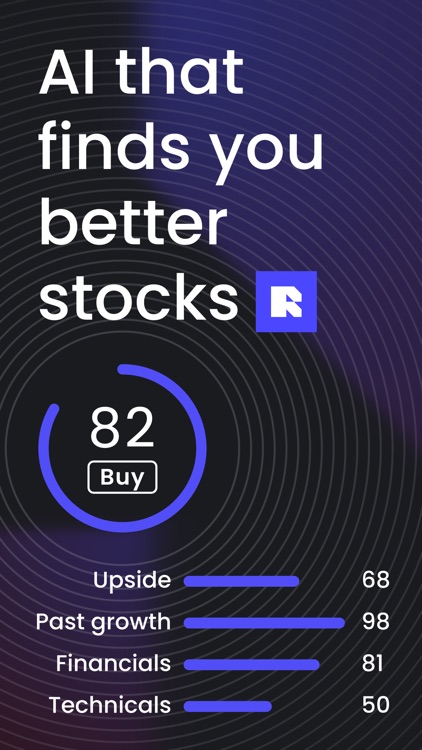20 Free Pieces Of Advice For Choosing Trade Ai Websites
20 Free Pieces Of Advice For Choosing Trade Ai Websites
Blog Article
Top 10 Tips To Assess The Customer Service Of Ai Platform For Predicting And Analyzing Stocks
When selecting a platform that utilizes AI to analyze stocks and predict their future Customer support is a crucial aspect. Reliable, responsive support can have a huge impact in resolving any issues, maximizing the use of the platform, and ensuring that trading is effortless. Here are 10 top suggestions for evaluating the customer support of these platforms.
1. Evaluate Support Availability
24/7 support: Find out if the platform offers round-the-clock assistance, which is especially crucial for international market and real-time trade.
Business hours. If 24 hour support is not available, be sure you are able to get support during your trading time.
Holiday coverage: Check for support during holidays to determine if you get assistance during weekends, holidays and closings of markets.
2. Test Response Times
Initial response. Test your support by sending them a query.
Resolution time: Decide how long you need to address issues before they are resolved, and don't just admit their existence.
Live chat: If live chat is available test the responsiveness and efficiency.
3. Examine the support channels
Multi-channel support: Make sure the platform offers support through various channels (e.g. email telephone call, email live chat, email, and social media).
Verify that your preferred support channel is solid.
Self-service: Utilize an FAQ or a knowledge base to quickly solve problems.
4. Evaluation of Quality of Support
Expertise: Ensure that the support personnel you hire are well versed in trading, platform issues and technical issues.
Problem-solving: Evaluate whether support agents are able to effectively solve complex issues or escalate them appropriately.
Professionalism: Find out if the customer service interactions are pleasant and professional. They should also be helpful.
5. Look for dedicated Account Managers
Premium support: Make sure that the higher-tier plans or users from institutions have access to dedicated account managers.
Account managers who offer personalized and proactive assistance.
Relationship-building: Determine if the manager of your account is available and if you can establish a long-term relationship with users.
Review the Documentation Help
Knowledge base - Ensure that the platform offers an organized and searchable knowledge base that includes tutorials. Guides, and suggestions for troubleshooting.
Video tutorials: Find out whether the platform provides video tutorials or webinars for visual learners.
API documentation: If you're a developer, ensure that the platform has precise and clear API documentation.
7. Assess Community and Peer Support
Forums for users Find out if there is an active user community or forums on the platform where they can exchange ideas and suggestions.
Social media groups: Search for non-official social media groups (e.g. Reddit. Facebook. LinkedIn) that discuss the platform.
Community engagement: Find out whether your team from your platform is actively involved in forums or participates in discussions in the community.
8. Evaluate Escalation Processes
Issue escalation. You must have a defined process for escalating unresolved issues to management or higher-level staff.
Follow-up Check to see if support is following up to make sure that the issue has been resolved.
Feedback loops: Check the platform's ability to collect user feedback to improve support services.
9. Test Support for critical situations
Contact the support team during periods of high volatility to determine their response.
Technical Issues: Try simulating the issue (e.g. login issue, data discrepancy) and observe how the support team handles it.
Trade execution: Check whether support can help in urgent trade-related issues (e.g. failing orders, delays in execution).
Take User Feedback into Account
Online reviews: Use platforms like copyright G2 or Reddit to read user reviews and measure the overall satisfaction.
Testimonials: Seek out reviews or case studies that demonstrate positive support experiences.
Find out how the platform handles complaints and feedback handling policies.
Bonus Tips
Support during the trial period: To evaluate the quality of the platform, you can test the support of the platform during a free trial period.
Language support: If an English-speaking non-native, confirm whether you can get support in your language of choice.
Training and onboarding Learn whether there are any onboarding sessions that will assist new users in getting up and running.
It is possible to evaluate customer support on AI stock predicting/analyzing platforms by following these guidelines. If you do this, you will be able select a platform that offers quick, reliable and efficient assistance. A strong customer service will improve your experience and ensure that you will benefit from all features. Follow the top continued on ai hedge fund outperforms market for site tips including best stock analysis app, ai stock, chart ai for trading, ai stock, best ai trading app, ai options trading, trading ai bot, incite, copyright ai trading bot, stocks ai and more.
Top 10 Suggestions For Assessing The Risk Management Aspect Of Ai Stock-Predicting/Analyzing Platforms
A trading platform that utilizes AI to predict/analyze stocks must have a robust risk management system. This will protect your capital investment and reduce any possible losses. A platform with strong risk management tools will assist you in navigating turbulent markets and make informed choices. Here are 10 guidelines on how you can evaluate the capabilities of the platform's risk management tools.
1. Review Stop-Loss Features, Take-Profit Features
Levels that can be customized - Make sure that the platform allows you to adjust your stop-loss, take profit and profit level for every strategy or trade.
Find out if your trading platform supports trailing stop that adjusts itself automatically when the market shifts towards your.
Stop-loss guarantee: Check to whether the platform offers stop-loss guarantees, which will ensure that your position will be closed at a specific price in even volatile markets.
2. Measure Positions Tools
Fixed amount: Make sure that the platform you are using allows you to set positions according to a fixed amount.
Percentage of portfolio: Determine whether you are able to set position sizes in percentages of your portfolio total to control risk in a proportional manner.
Risk-reward: Check if your platform allows you to set risk-reward for each strategy or trade.
3. Check for Diversification support
Multi-asset trading: Make sure the platform allows you to trade across different types of assets, including stocks, ETFs as well as options. This can help you diversify your portfolio.
Sector allocation: Make sure the platform is equipped with instruments to monitor exposure to different sectors.
Geographic diversification. Check to see the platform you use allows you to trade in international markets. This will aid in spreading the risk across different geographic areas.
4. Review the margin and leverage controls
Margin requirements: Ensure the platform clearly outlines any limitations on margins when trading leveraged.
Check the platform to see whether it lets you set limits on leverage to limit the risk.
Margin call: Check that the platform is providing timely notification for margin calls. This could help avoid account closure.
5. Review the risk Analytics Reporting
Risk metrics. Make sure that your platform has key risk indicators (e.g. VaR Sharpe Ratio) that are pertinent to your portfolio.
Scenario Analysis: Determine if your platform allows you the capability to simulate different market scenarios to evaluate the risk.
Performance reports - Verify that the platform provides detailed performance reporting, including return adjustments for risk.
6. Check for Real-Time Risk Monitoring
Monitoring your portfolio: Make sure the platform offers live monitoring of your portfolio's risk exposure.
Alerts: Check if you can receive real-time notifications for at risk (e.g. Stop-loss triggers or margin breaches).
Look for dashboards with customizable options that will give you a snapshot of your risk profile.
7. How can you assess the results of Stress Testing and Backtesting
Stress testing. Check that your platform allows for you to stress test your strategy or portfolio under extreme market circumstances.
Backtesting: Find out whether the platform allows backtesting strategies based on old data to gauge performance and risk.
Monte Carlo Simulations: Check if the platform utilizes Monte Carlo simulations in order to model and assess various possible outcomes.
8. Risk Management Regulations Compliance Assessment
Compliance with regulatory requirements: Make sure the platform complies with relevant risk management regulations (e.g., MiFID II in Europe, Reg T in the U.S.).
Best execution: Verify if the platform adheres to the best execution practices, making sure that trades are executed at the highest possible price, minimizing slippage.
Transparency: See whether the platform has clear and transparent disclosures about risks.
9. Check for User Controlled Risk Parameters
Custom risk rules: Ensure the platform lets you set up your own risk management rules (e.g. maximum daily loss, maximum position size).
Automated risk control: Determine whether the system can automatically implement rules for risk management based on your defined parameters.
Manual overrides Check if you can manually override the risk control system that is automated in an emergency.
User feedback from reviewers and case studies
Review by users: Conduct user research to determine the platform's effectiveness in managing risk.
The case studies or testimonials must demonstrate the platform's ability to manage risks.
Community forums: See whether a platform is home to members who want to share strategies and strategies for managing risk.
Bonus Tips
Trial period: Take advantage of a free demo or trial period to try the capabilities of the platform for managing risk in real-world scenarios.
Support for customers: Make sure the platform offers robust support in relation to risk management concerns or questions.
Educational resources: Find out whether the platform offers education resources or videos on best practices in risk management.
By following these tips you can evaluate the capability of an AI software for analyzing and predicting stocks to manage the risk. This will ensure you choose a platform that safeguards your capital and minimizes any potential losses. Risk management tools that are durable are vital for trading in unstable markets. Read the top over at this website about ai chart analysis for more info including ai hedge fund outperforms market, trader ai app, ai chart analysis, best ai for trading, ai investing app, chart ai trading, incite ai, free ai tool for stock market india, best ai trading app, trading chart ai and more.